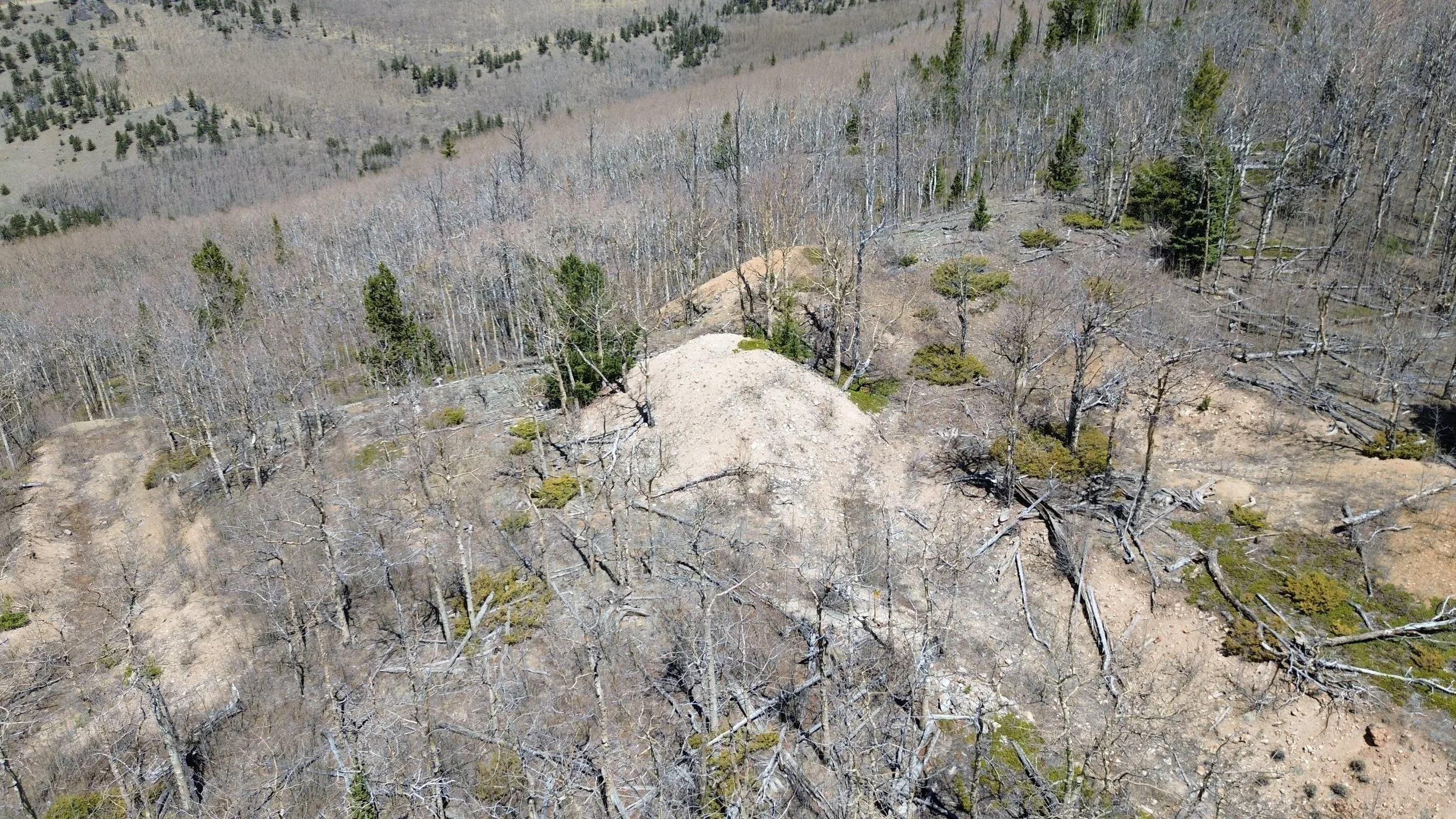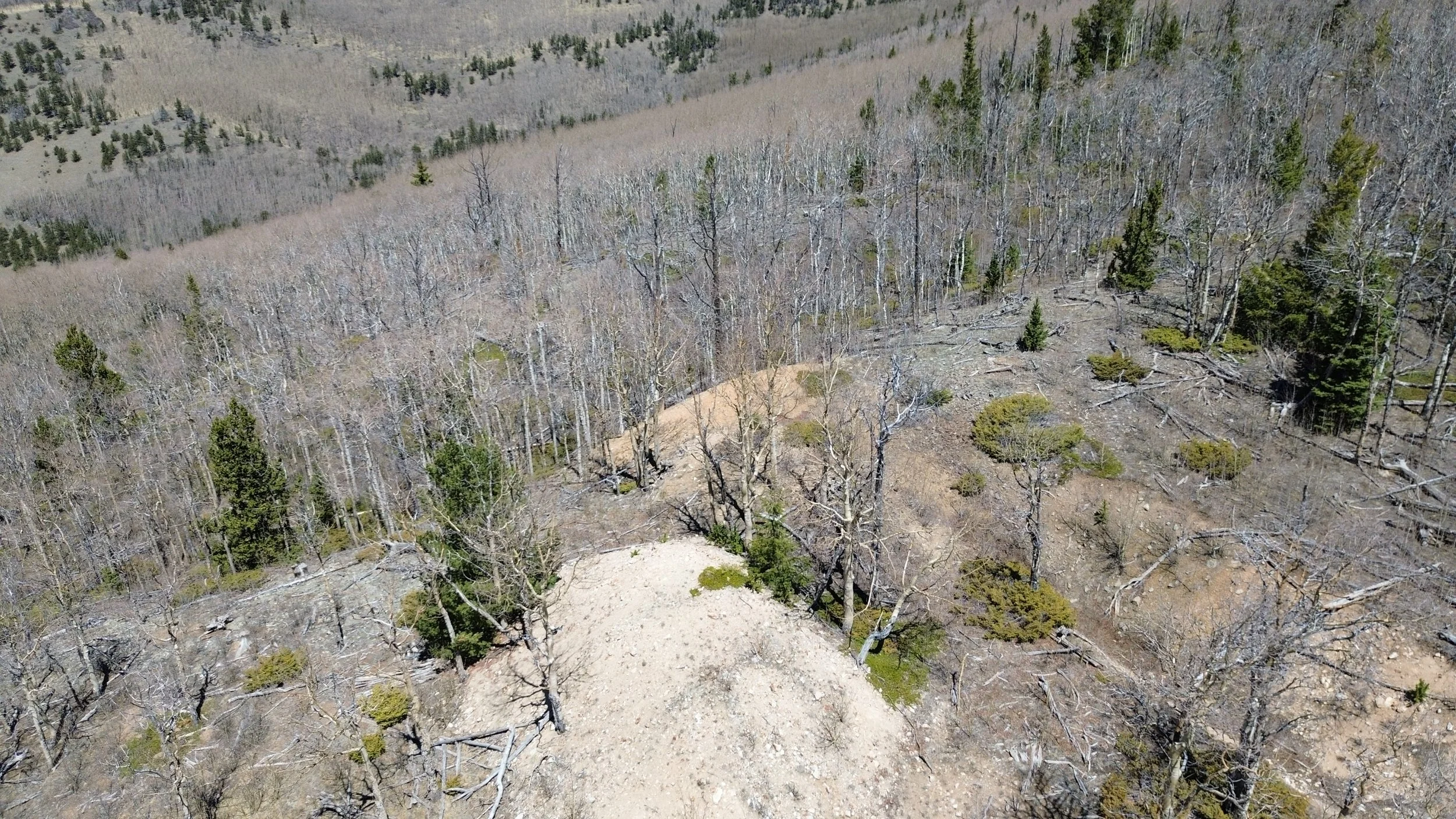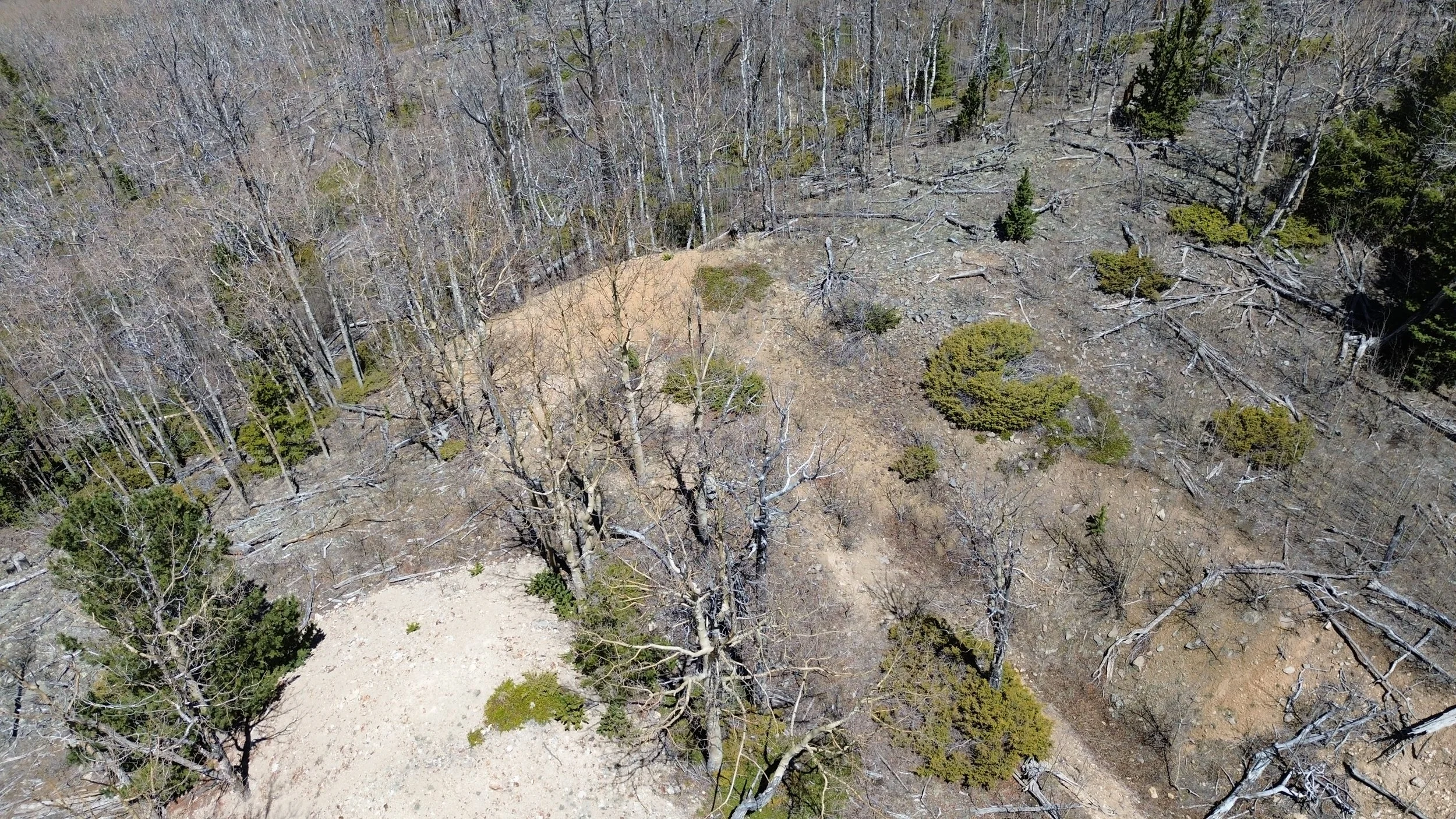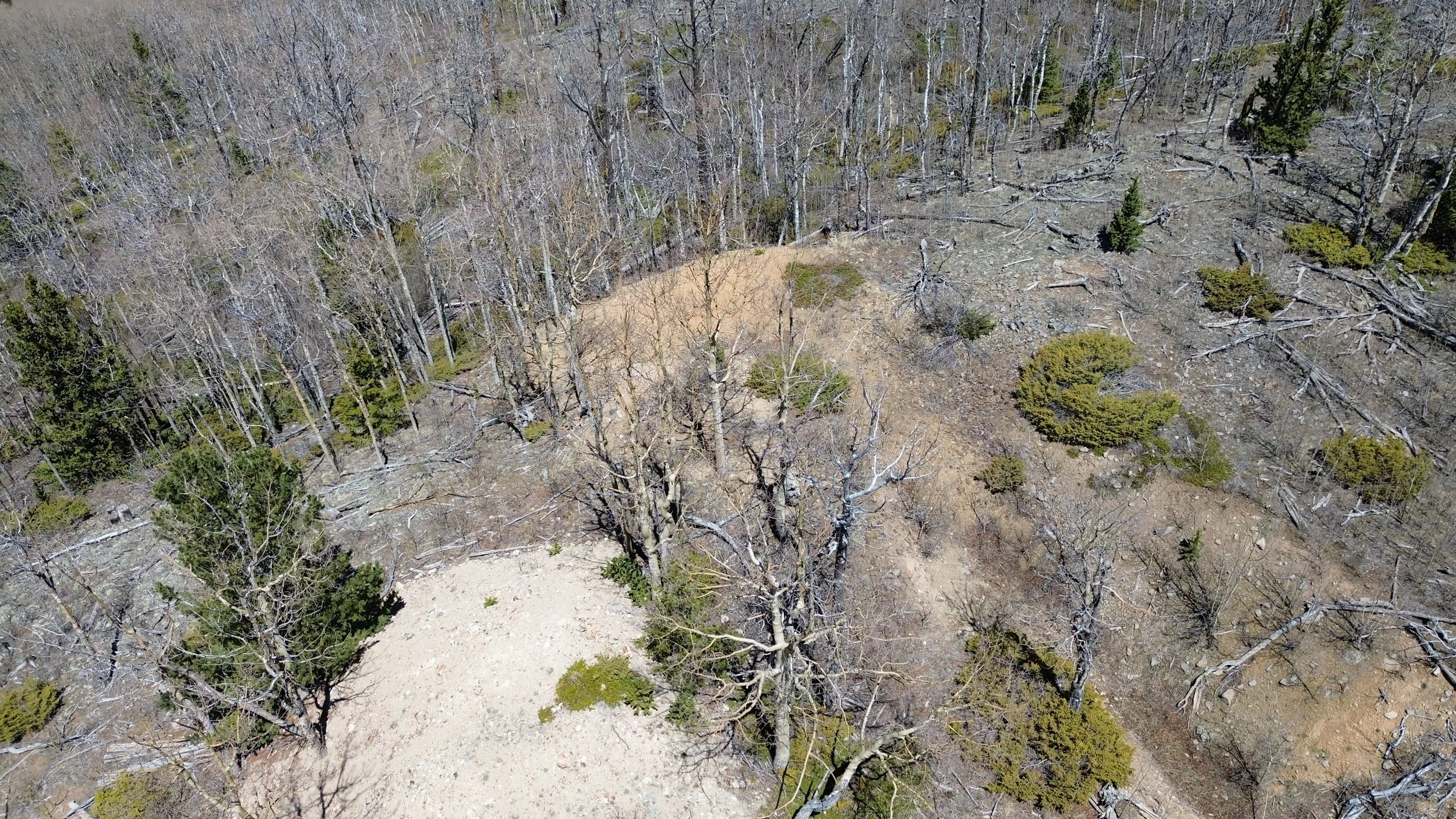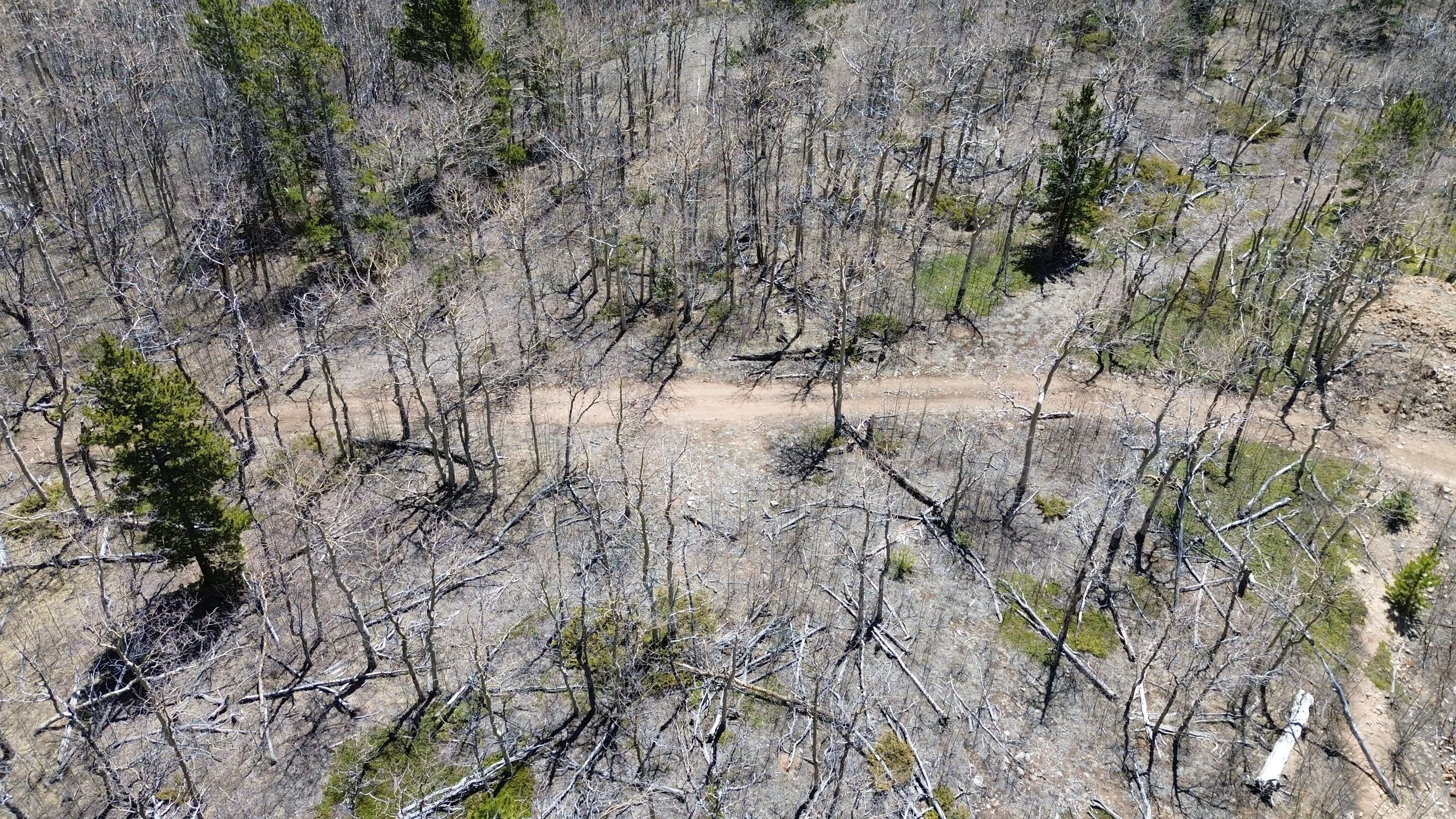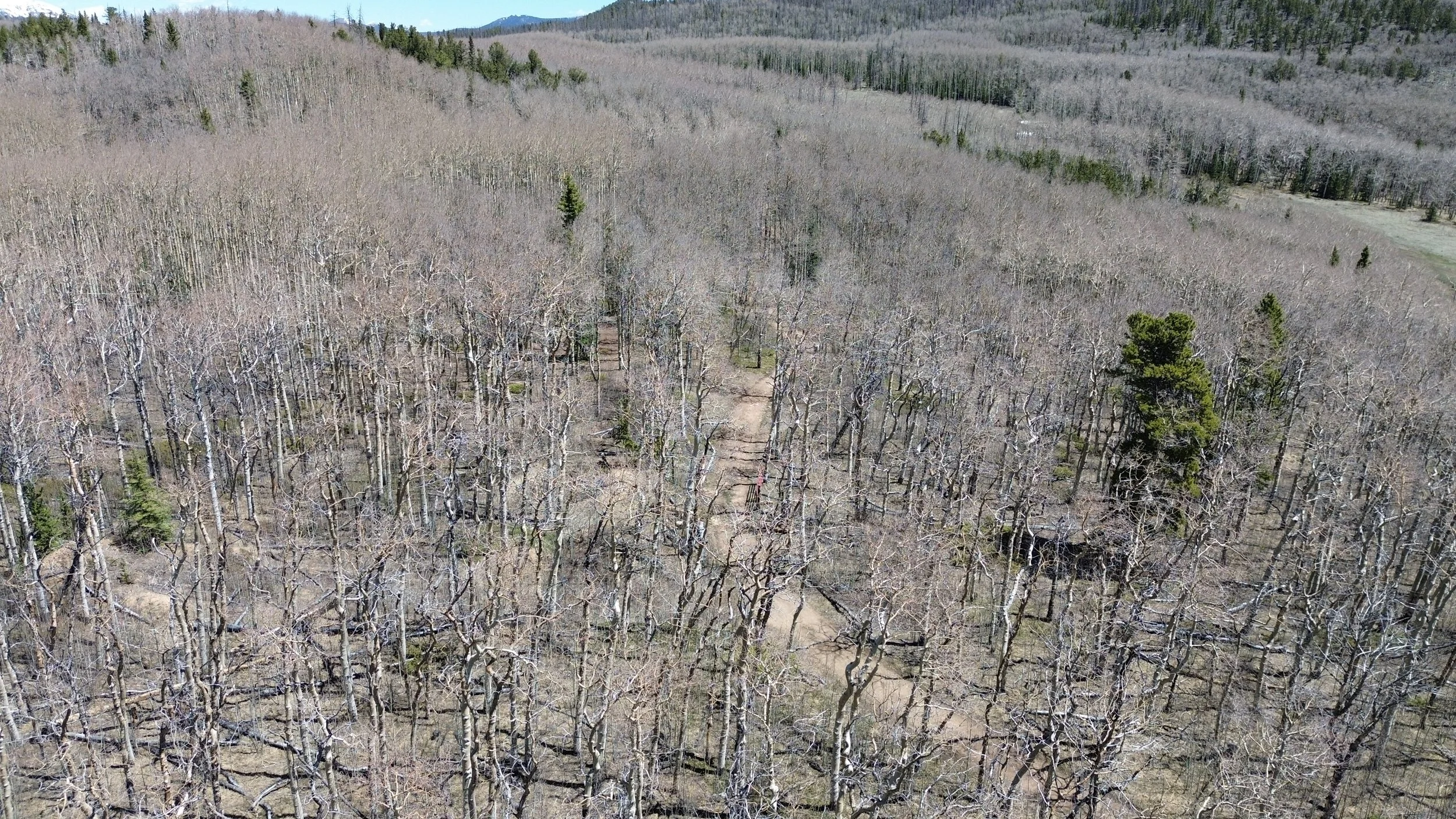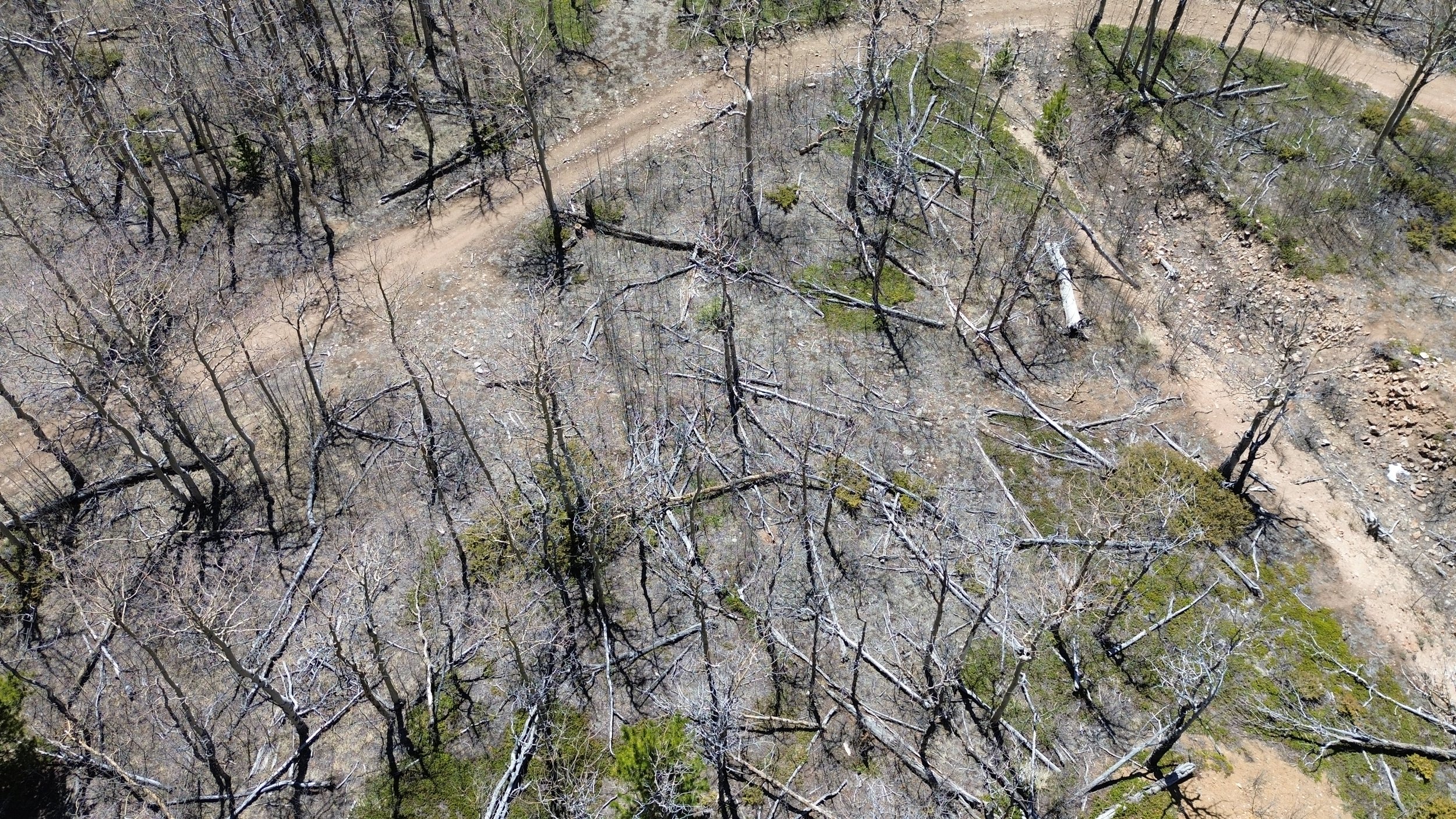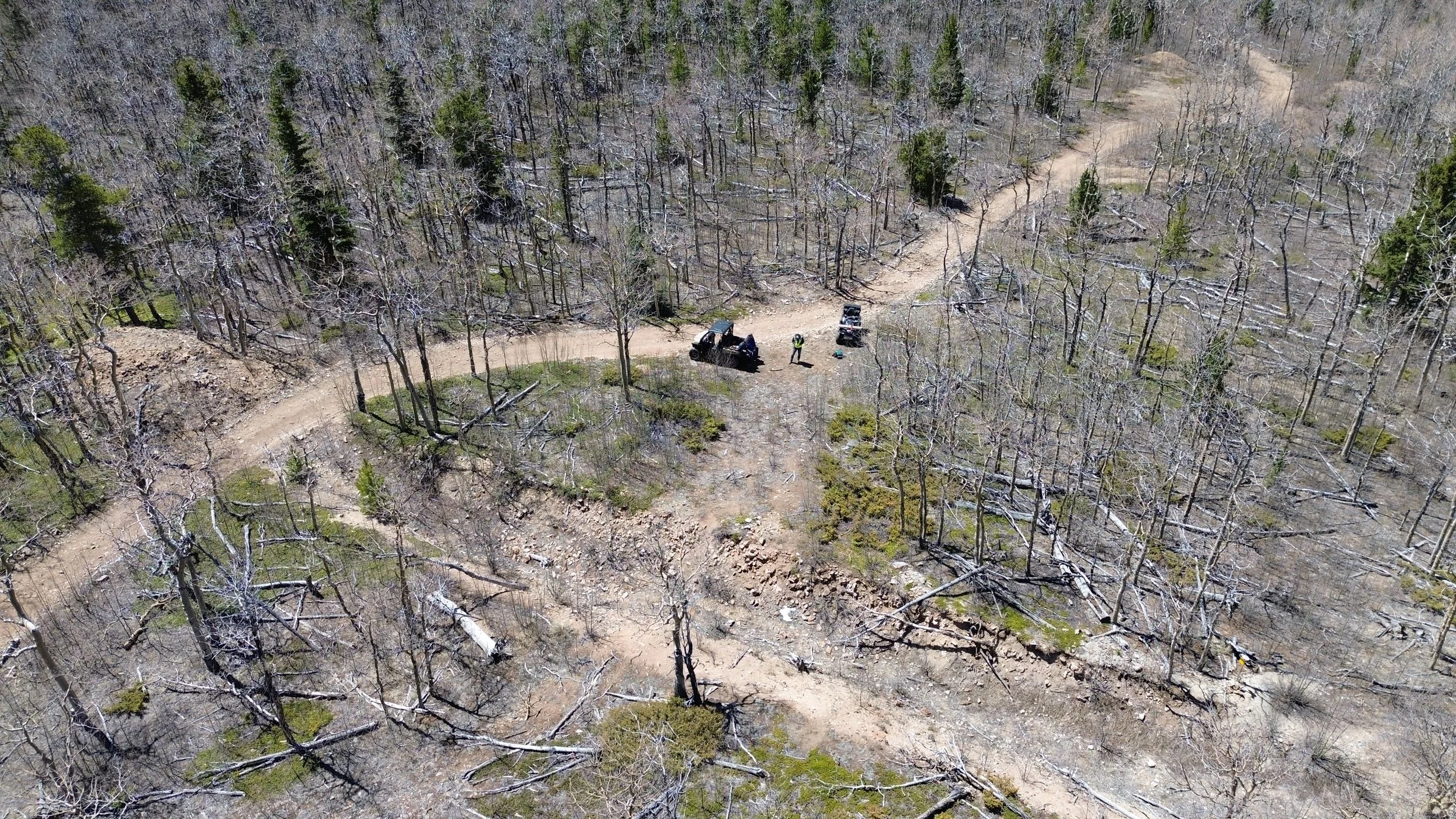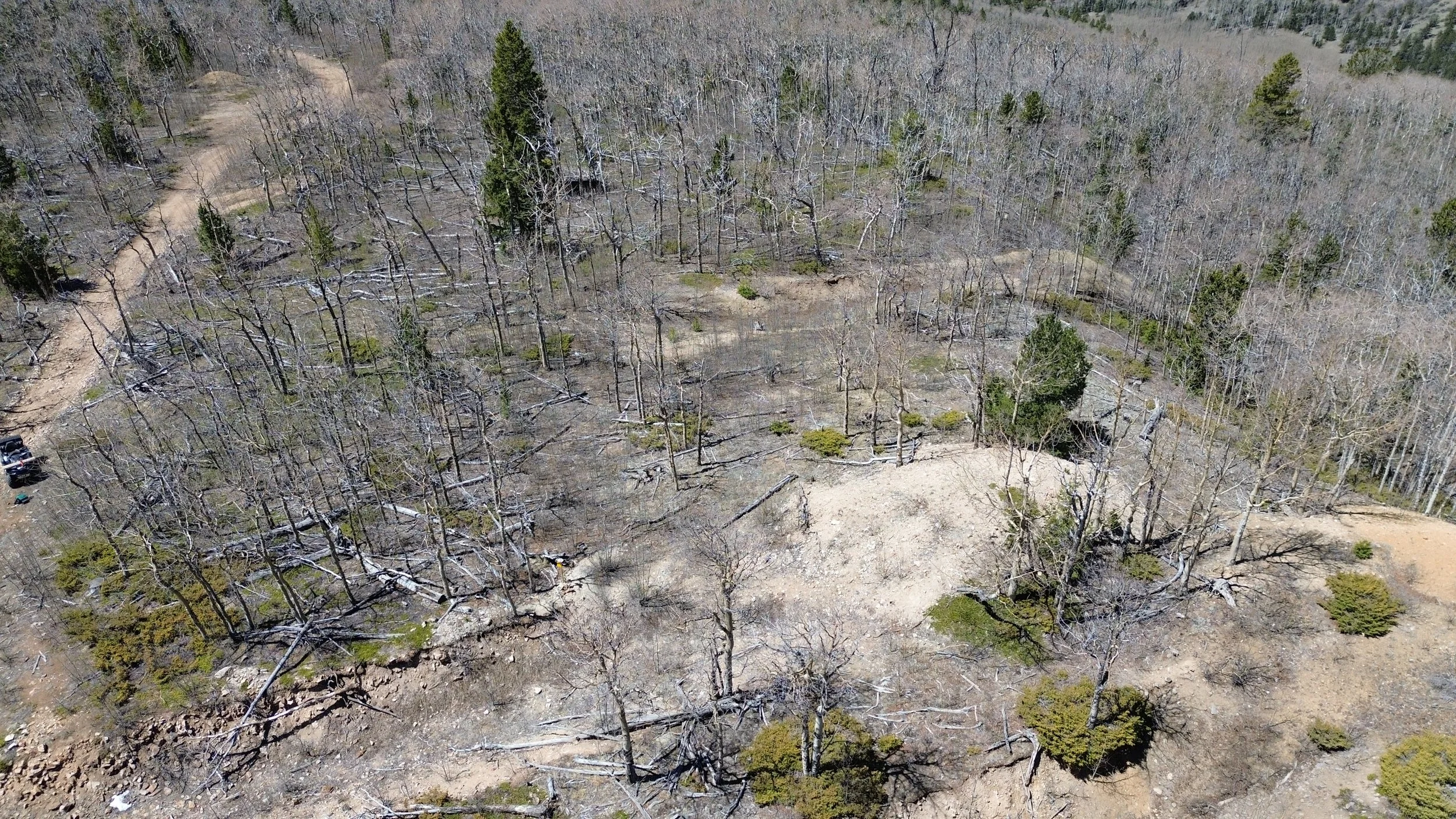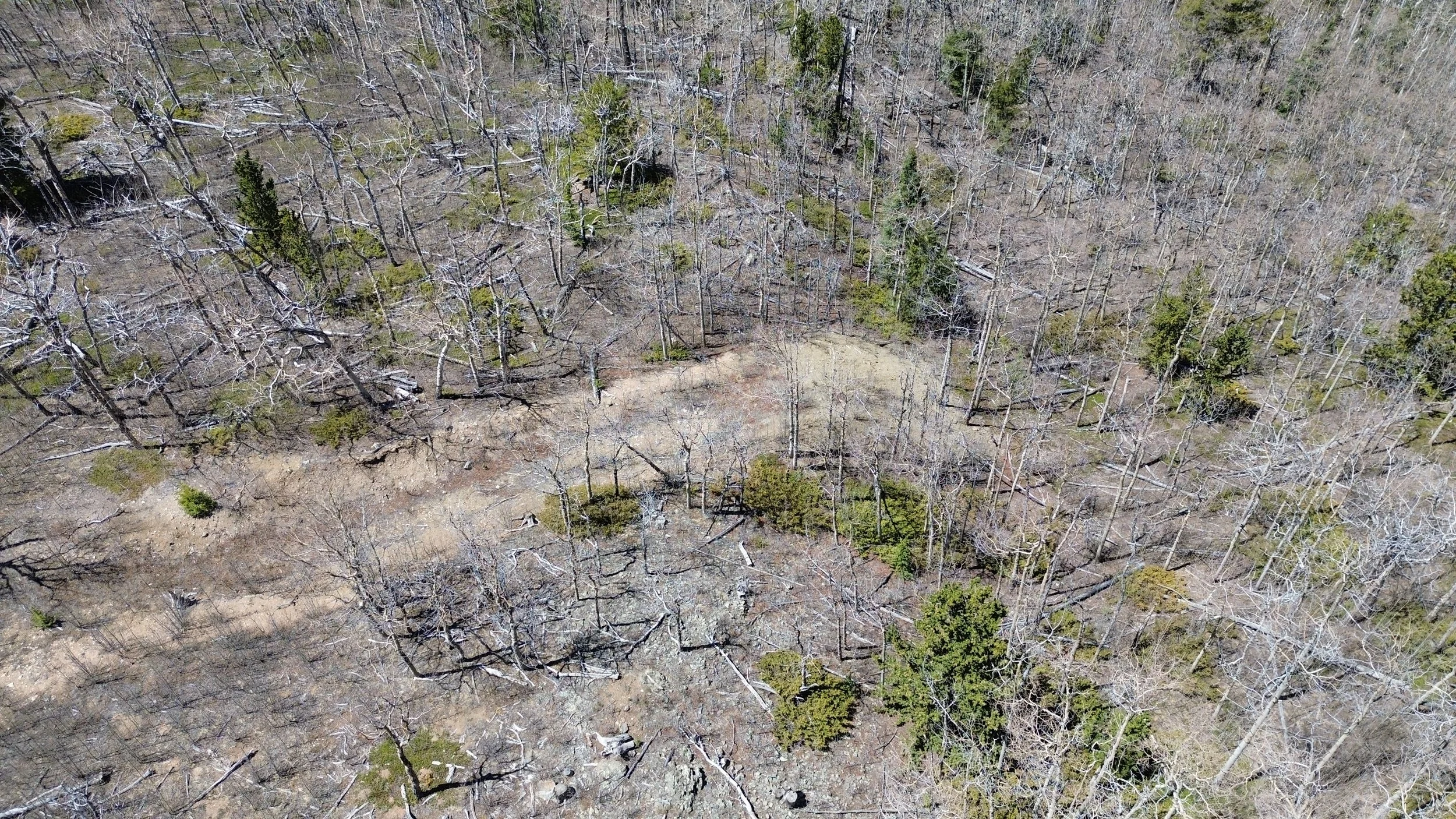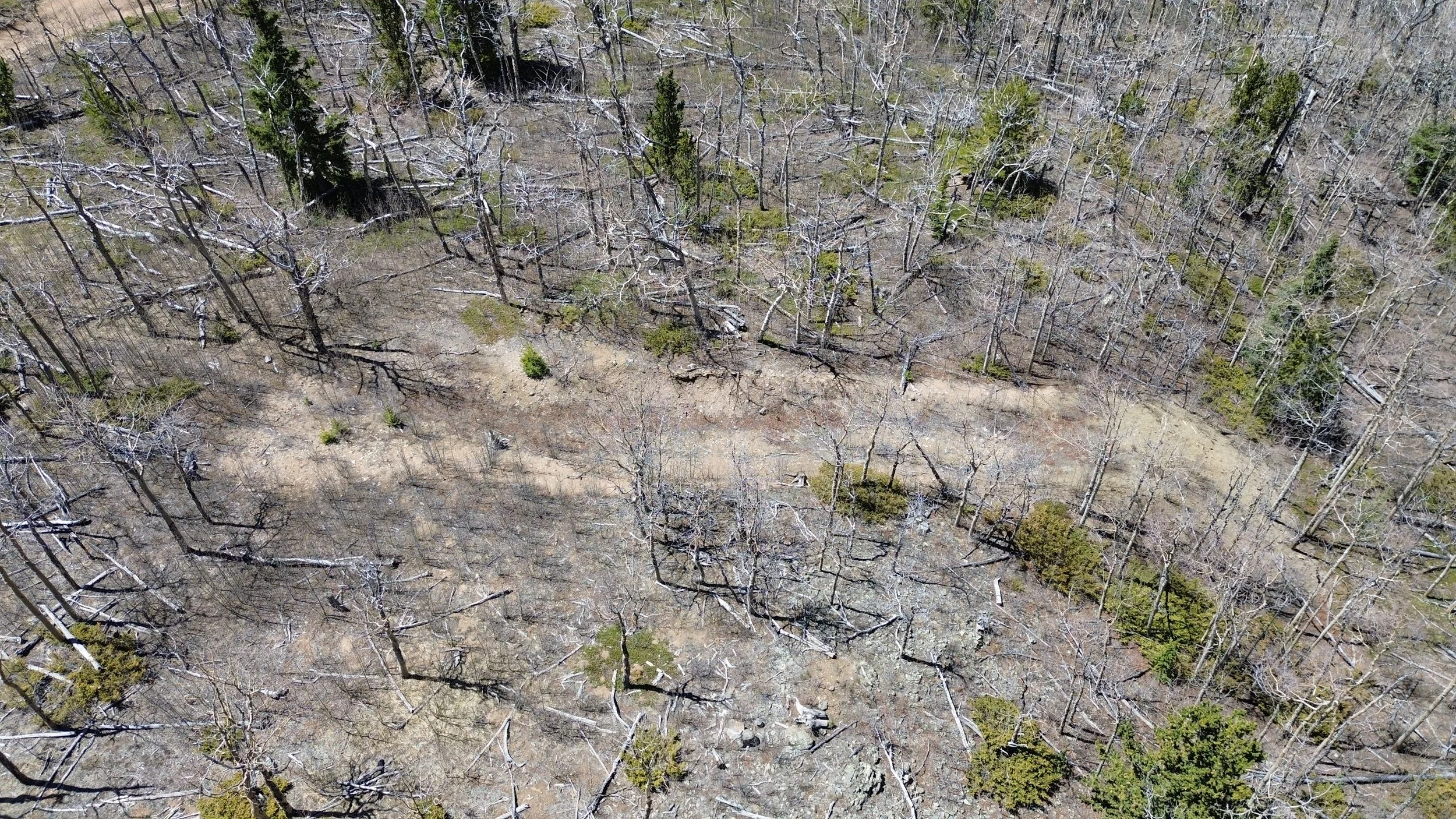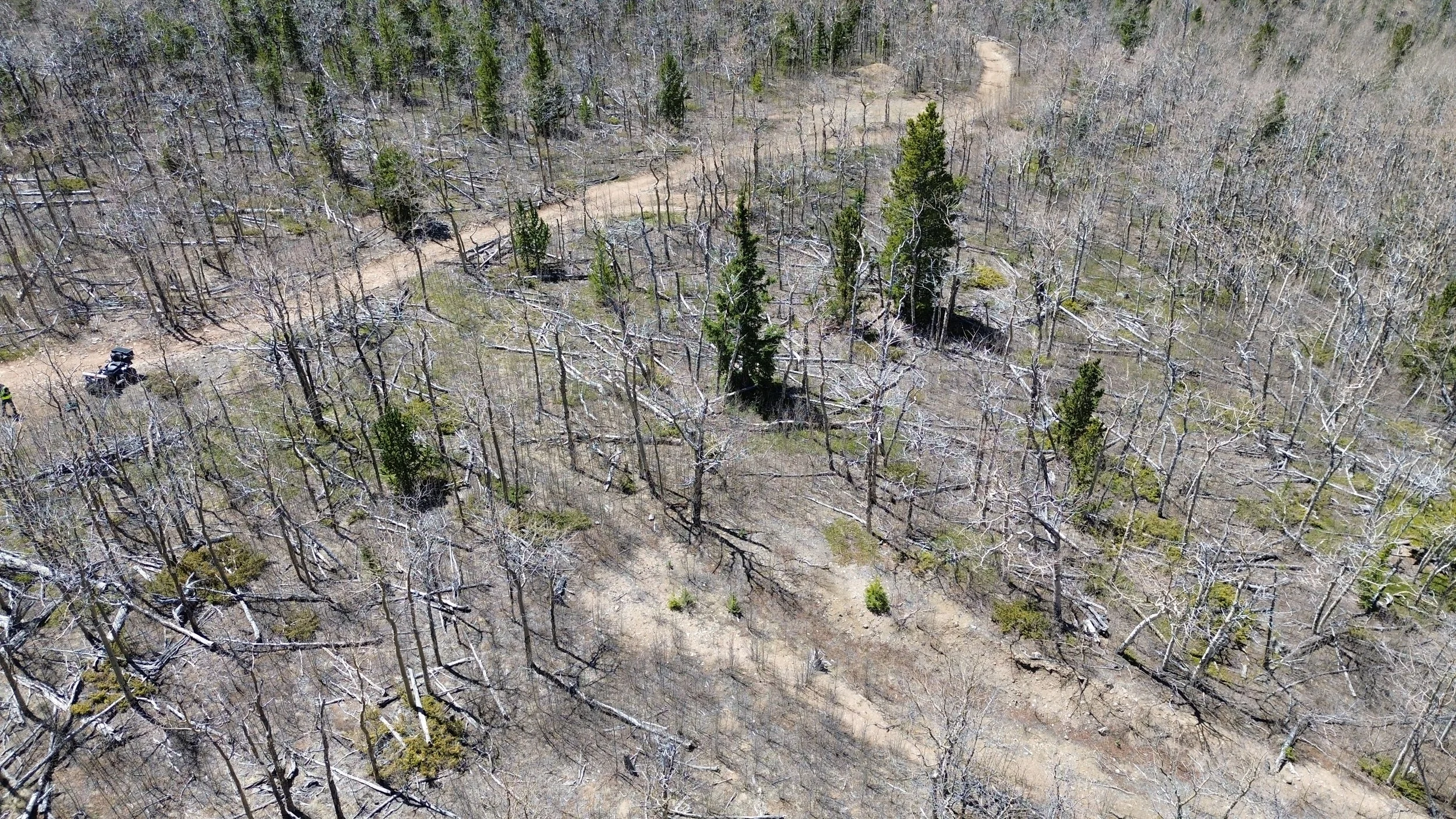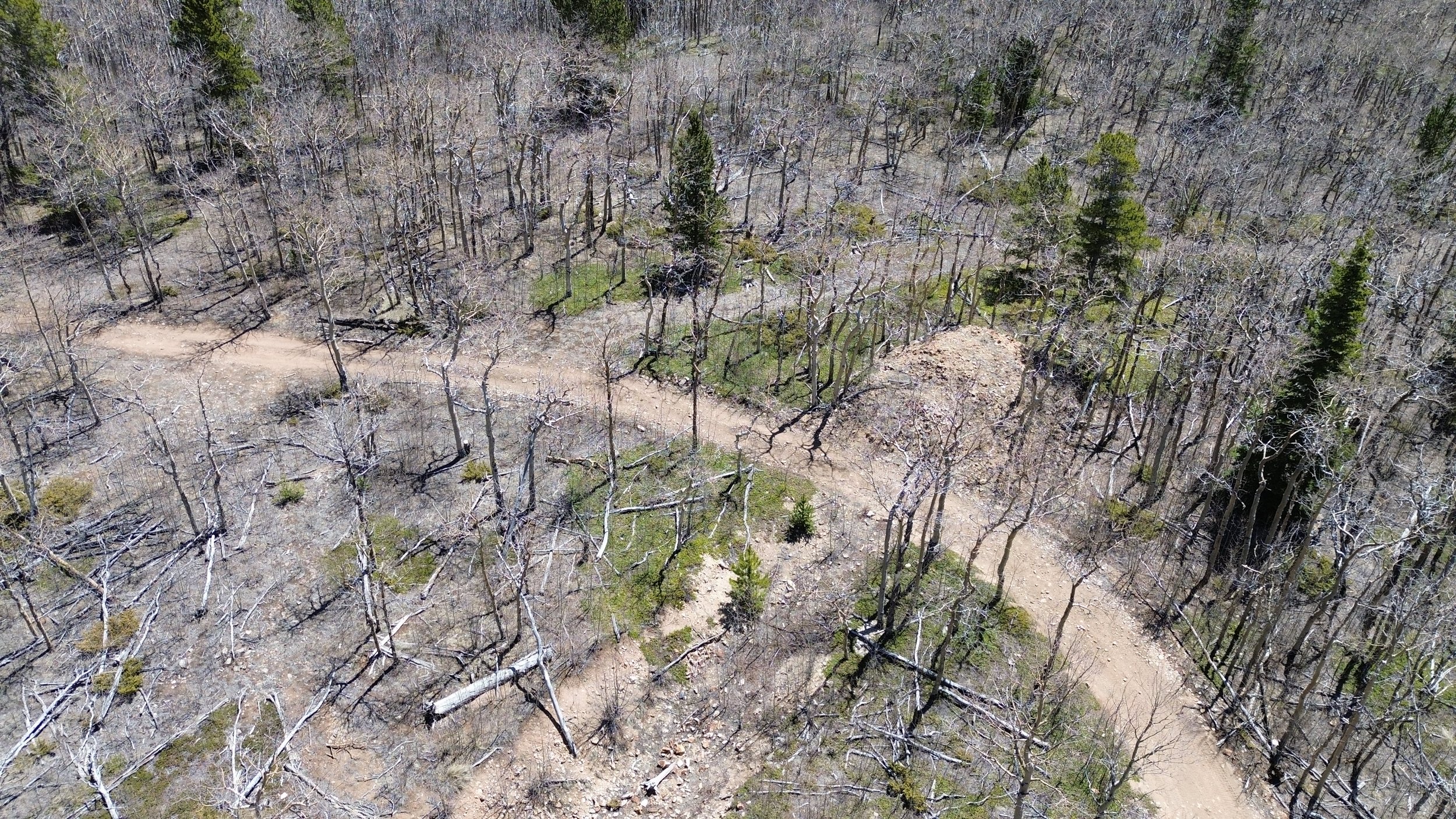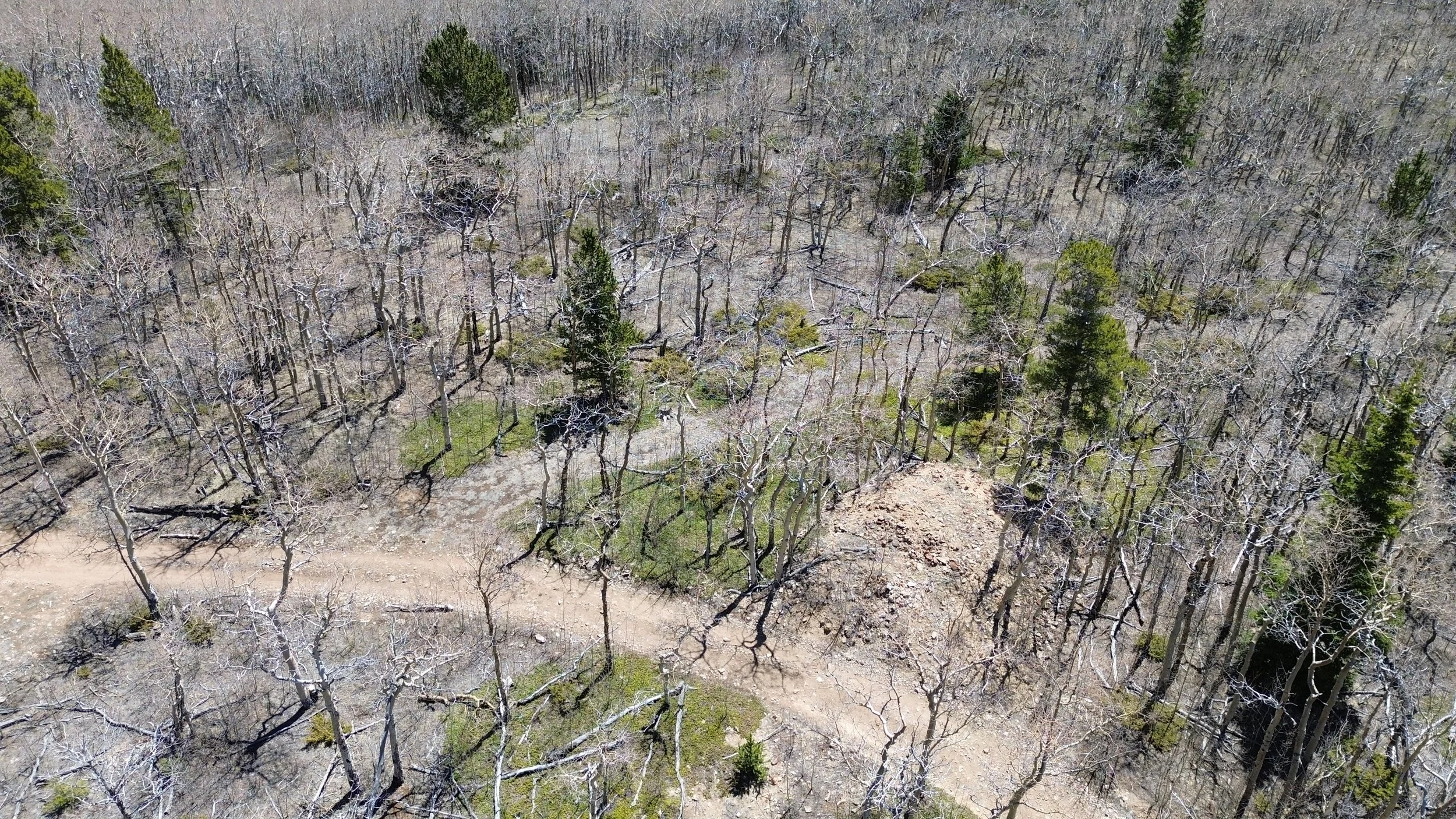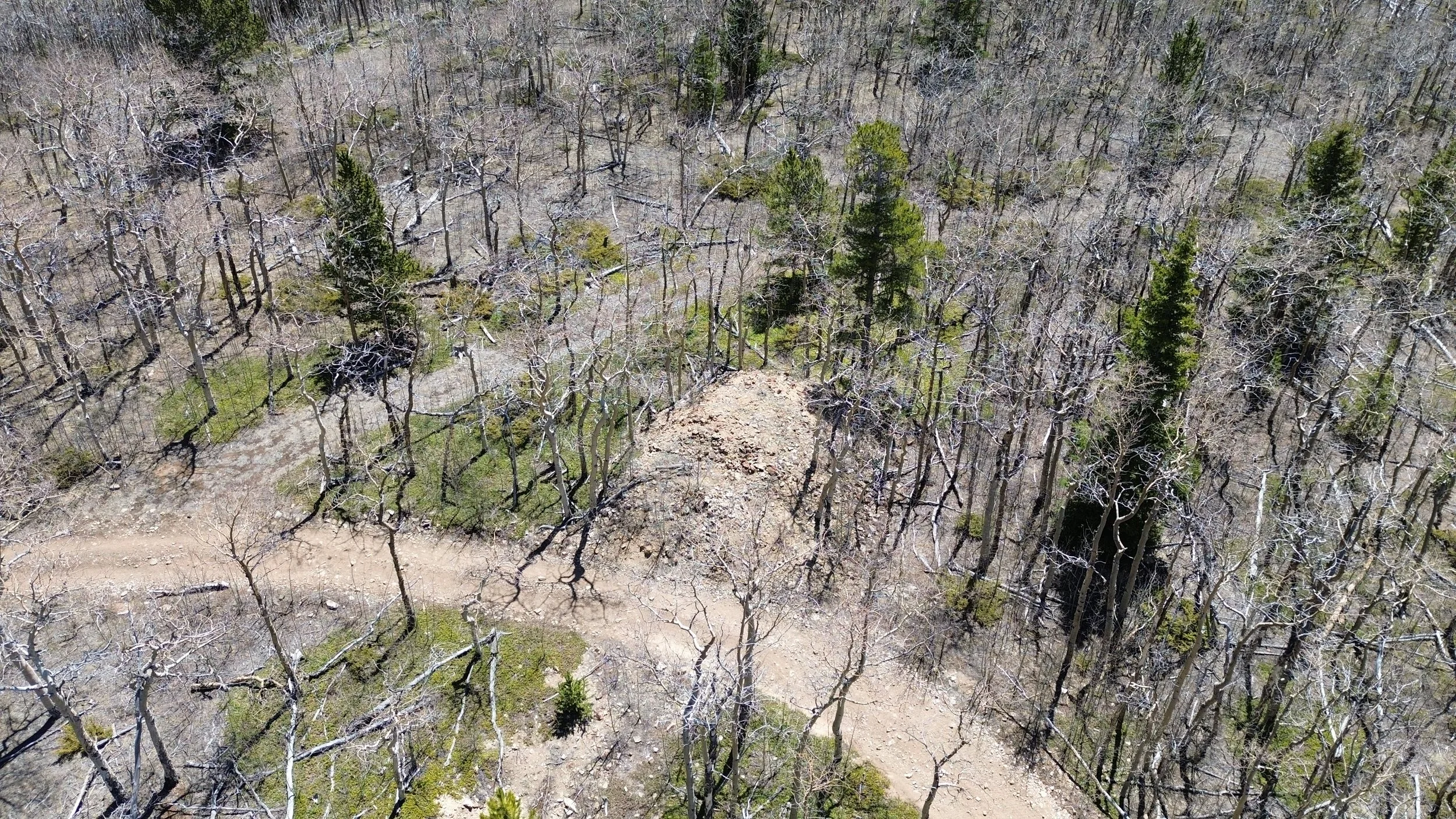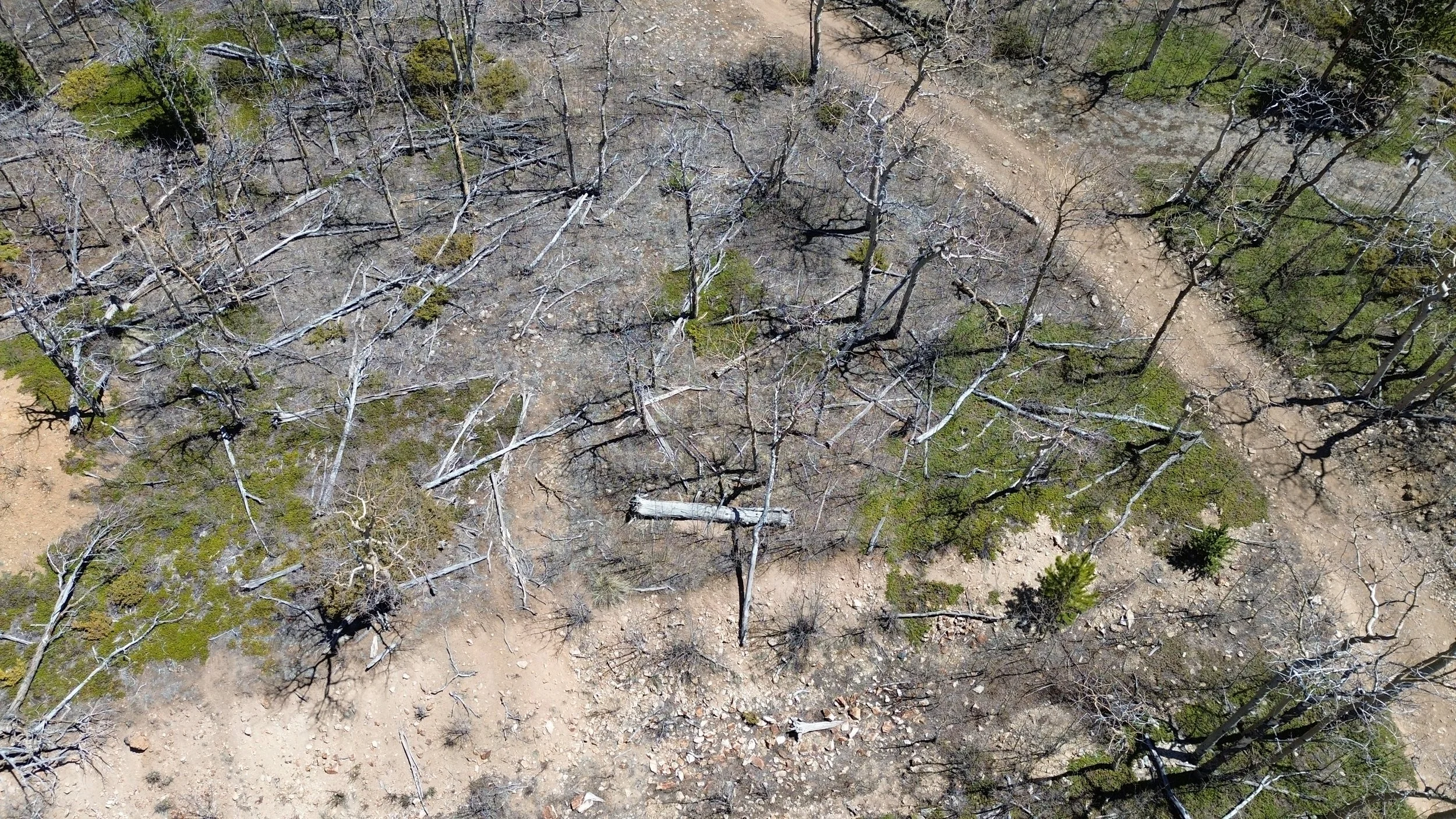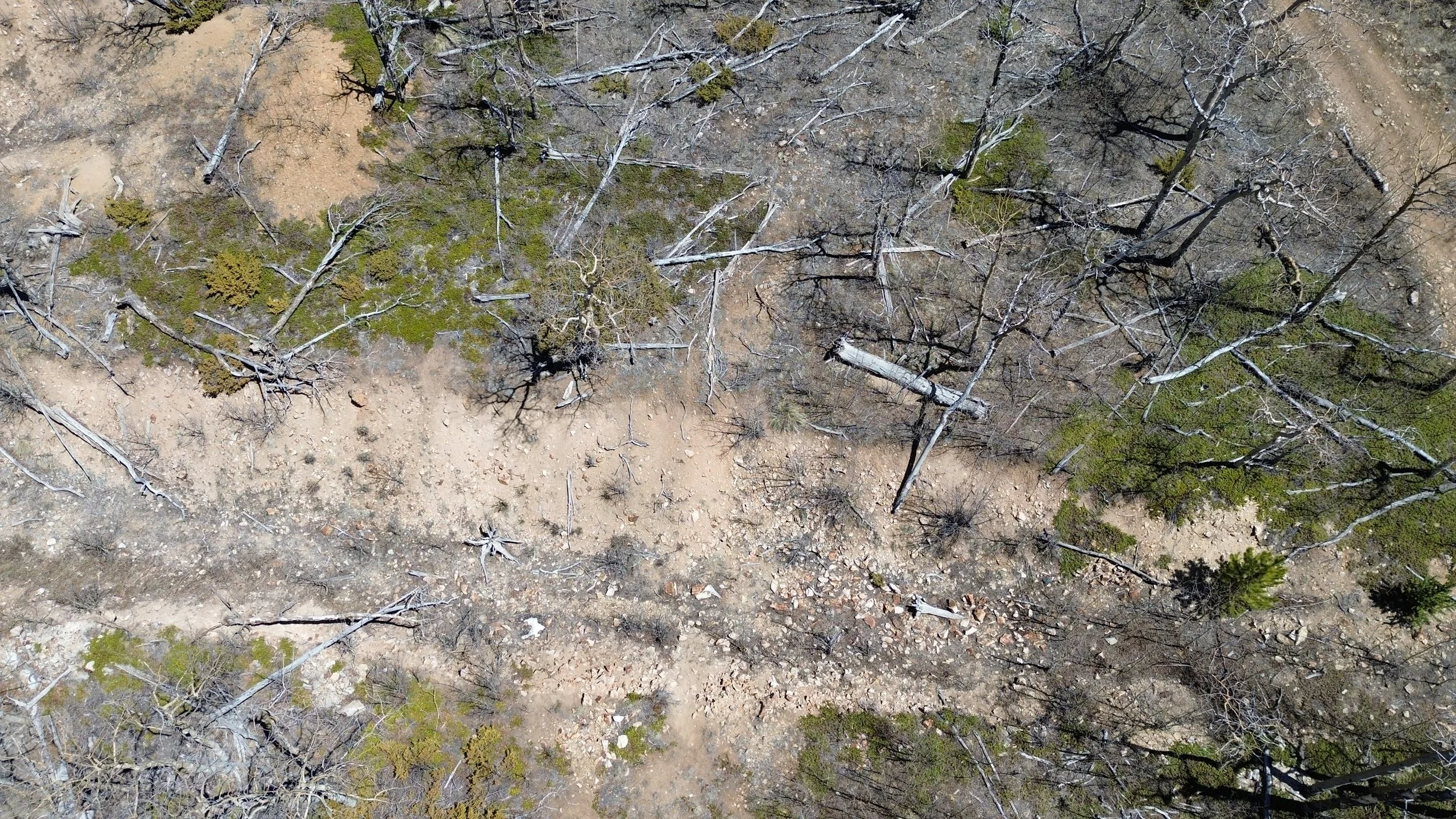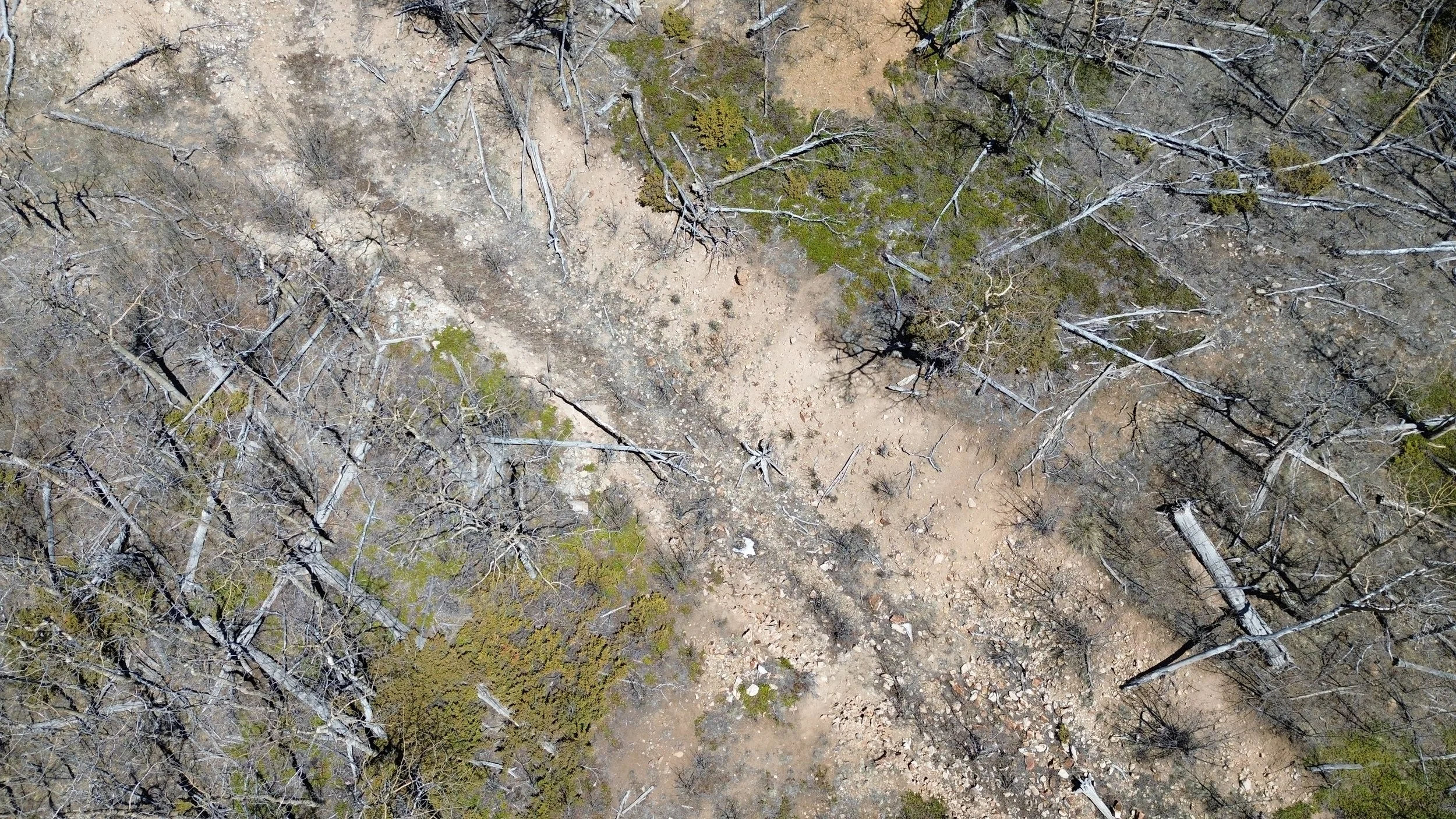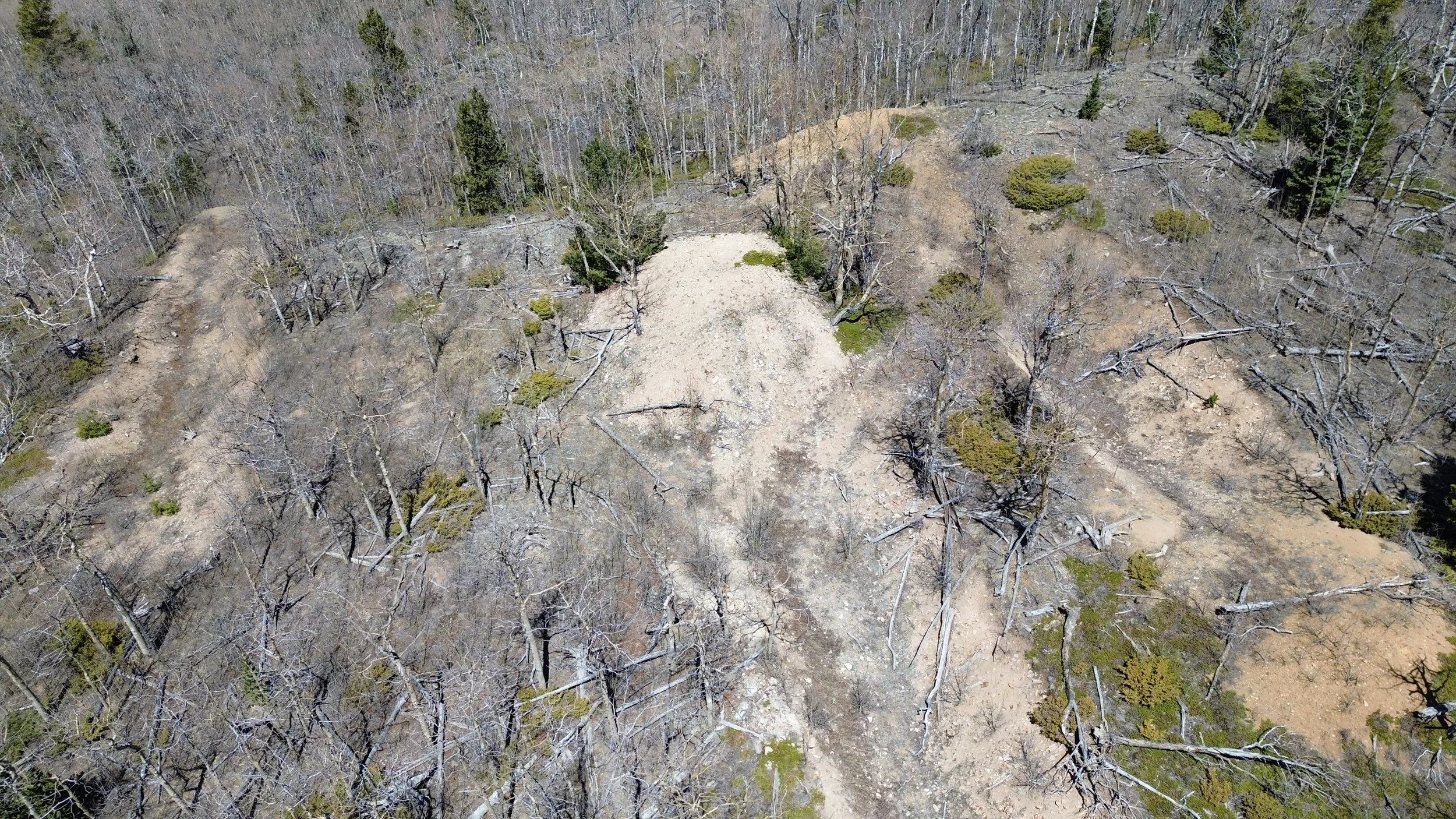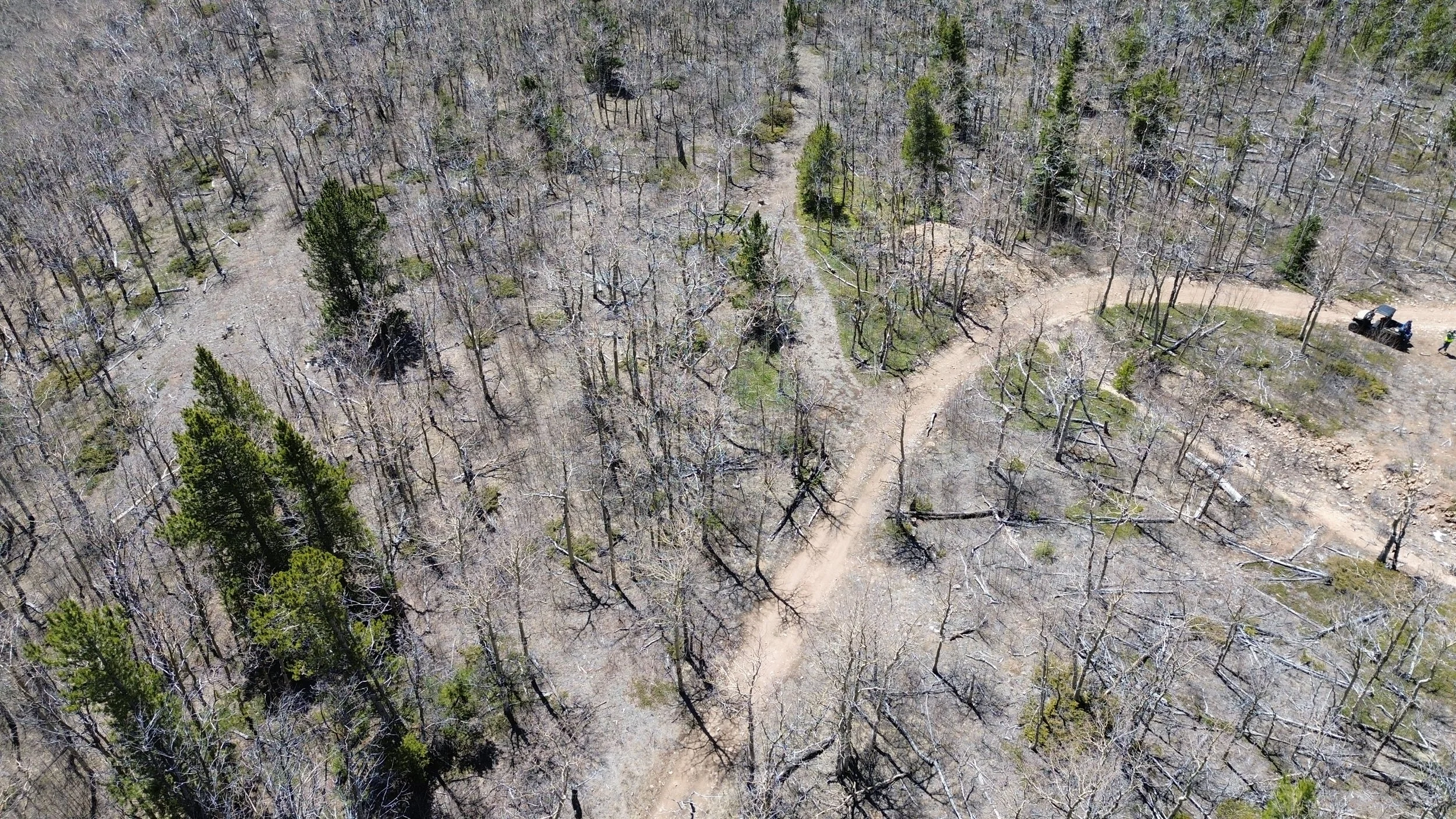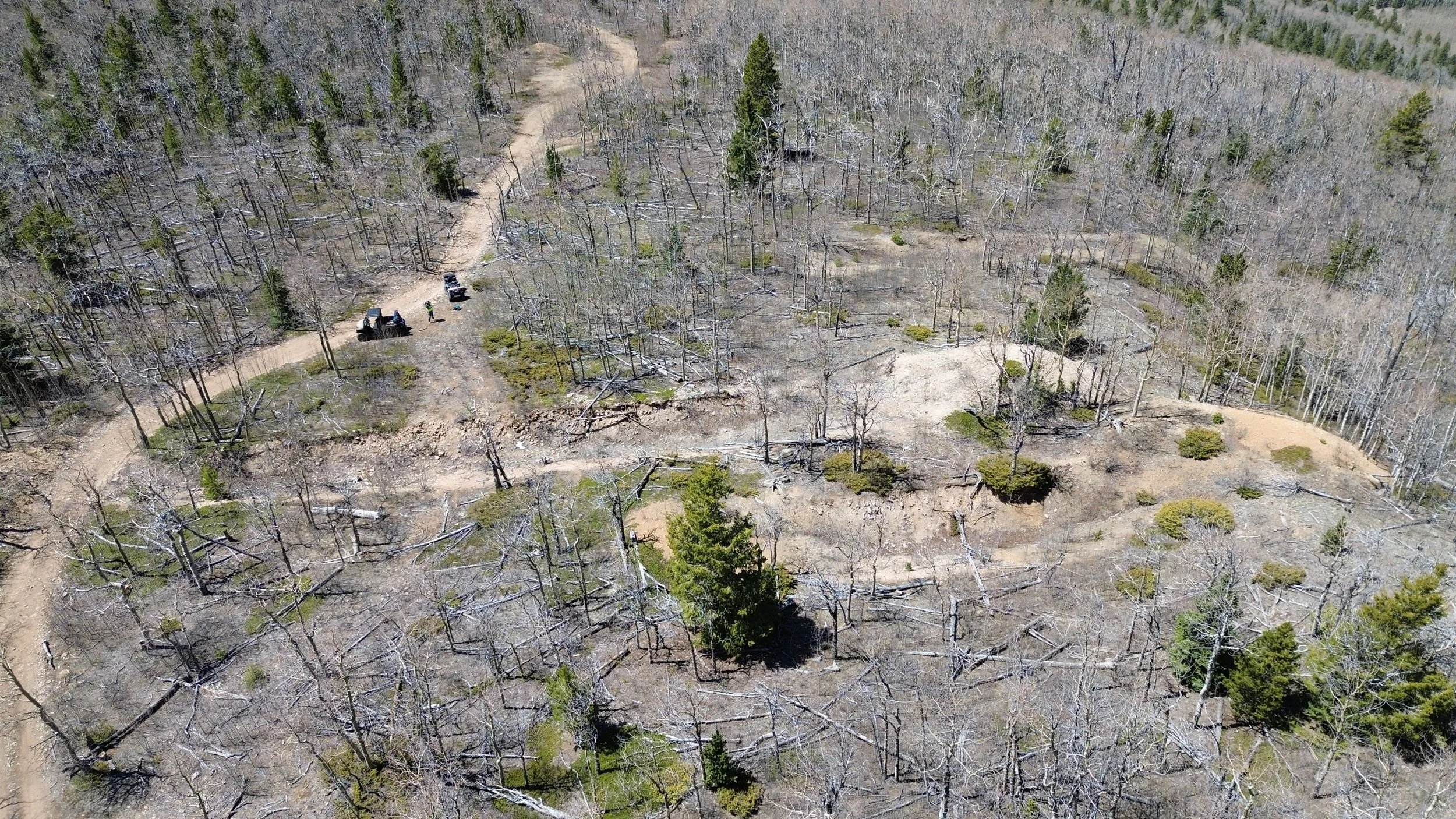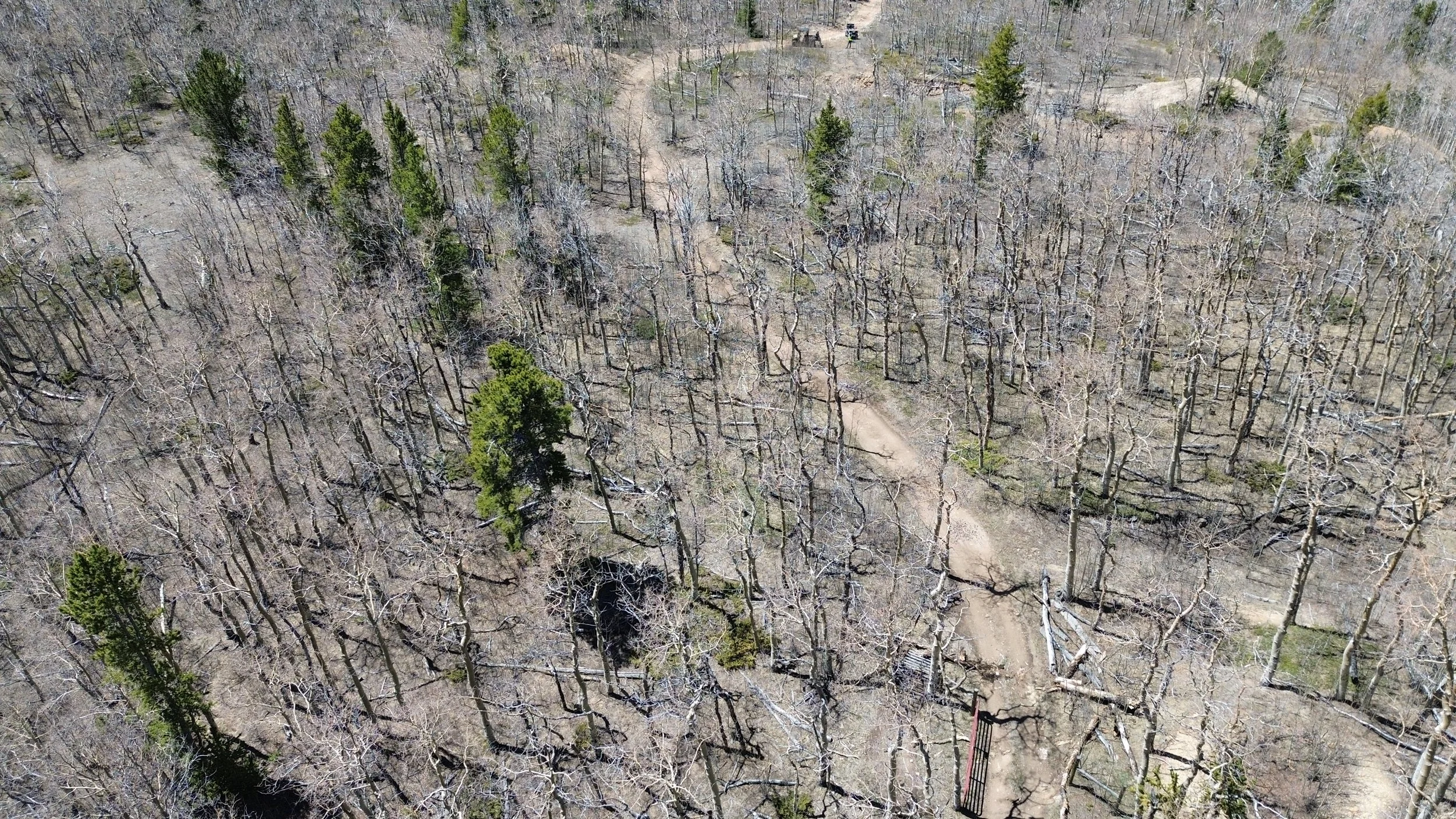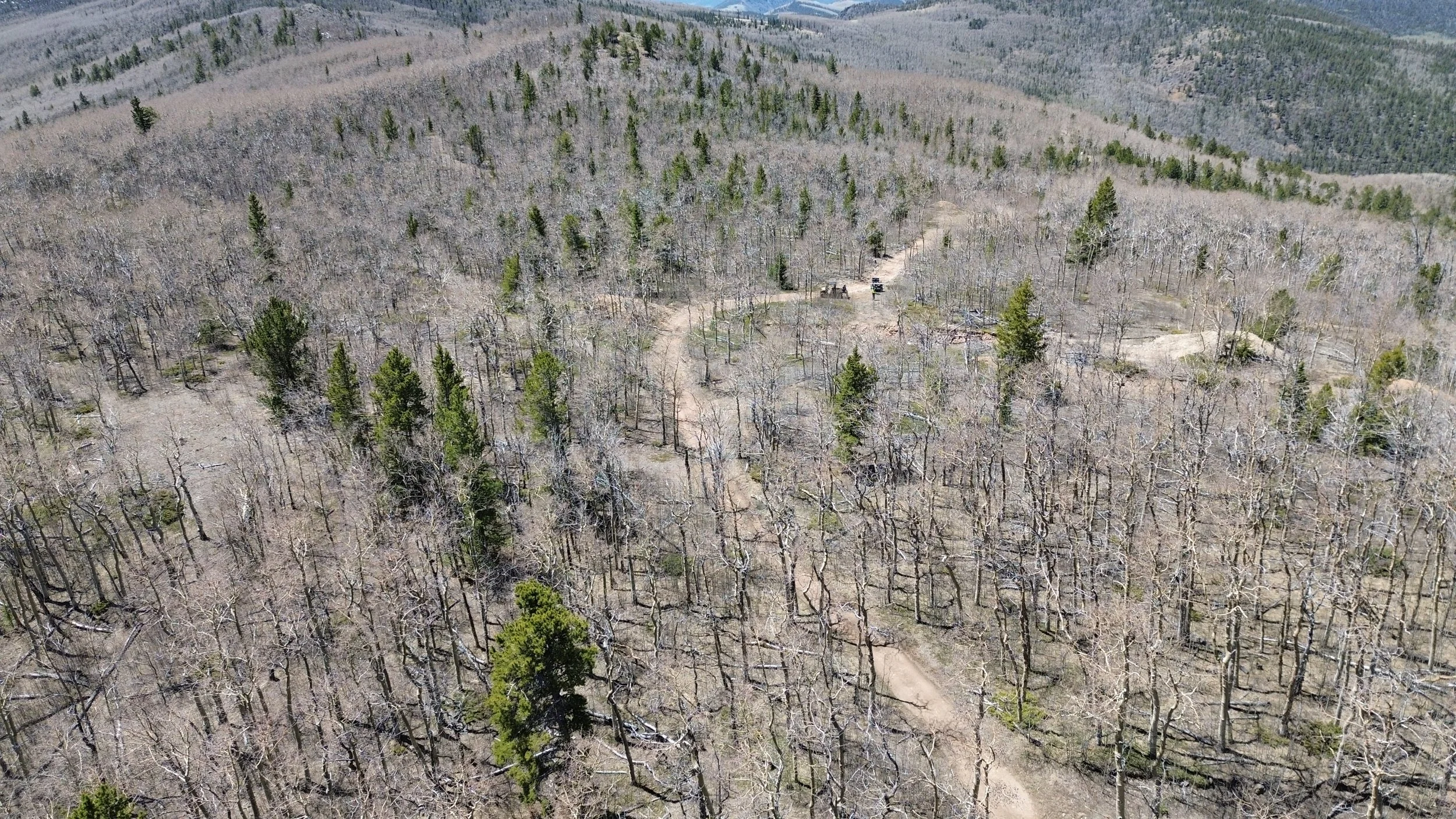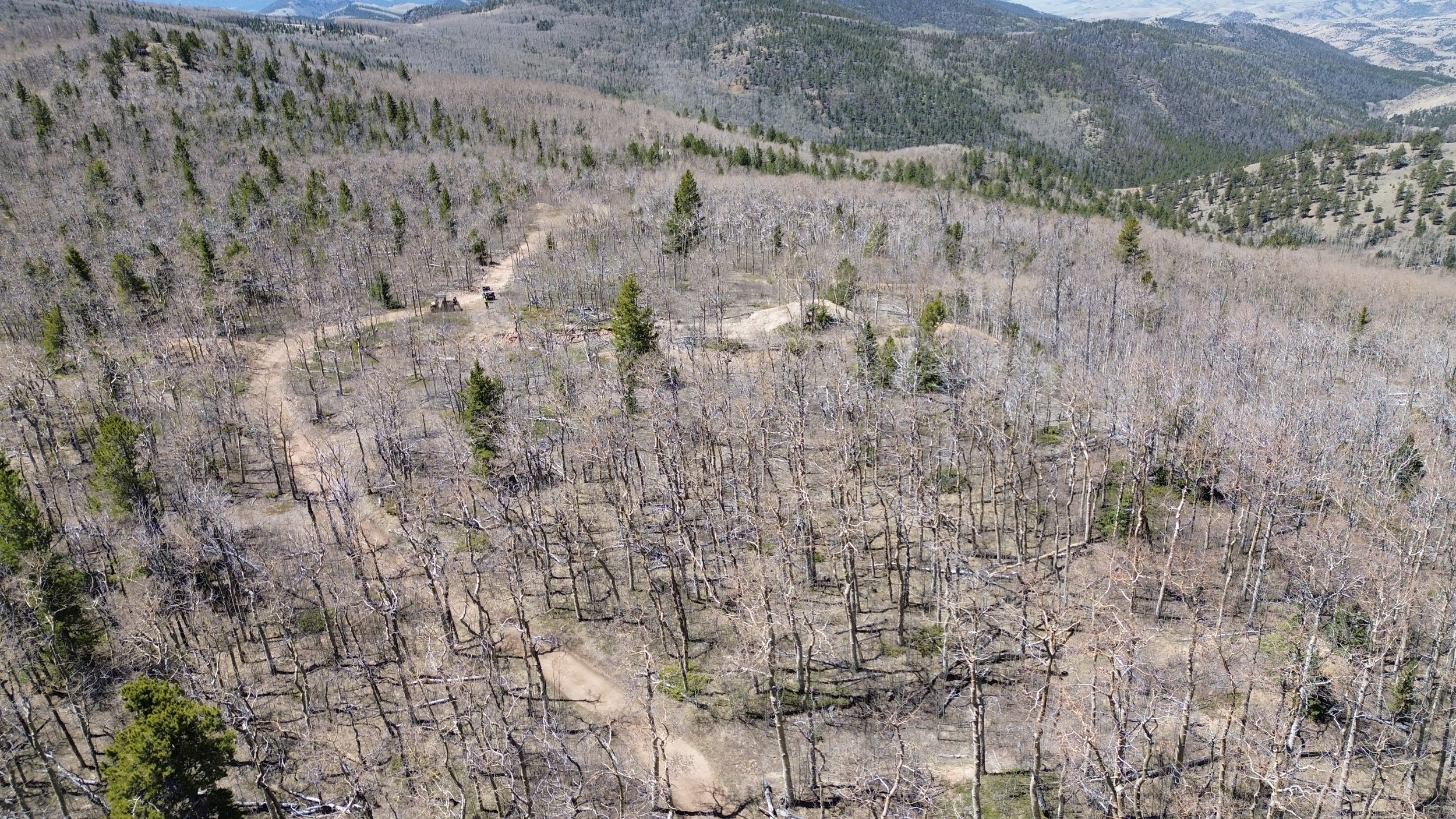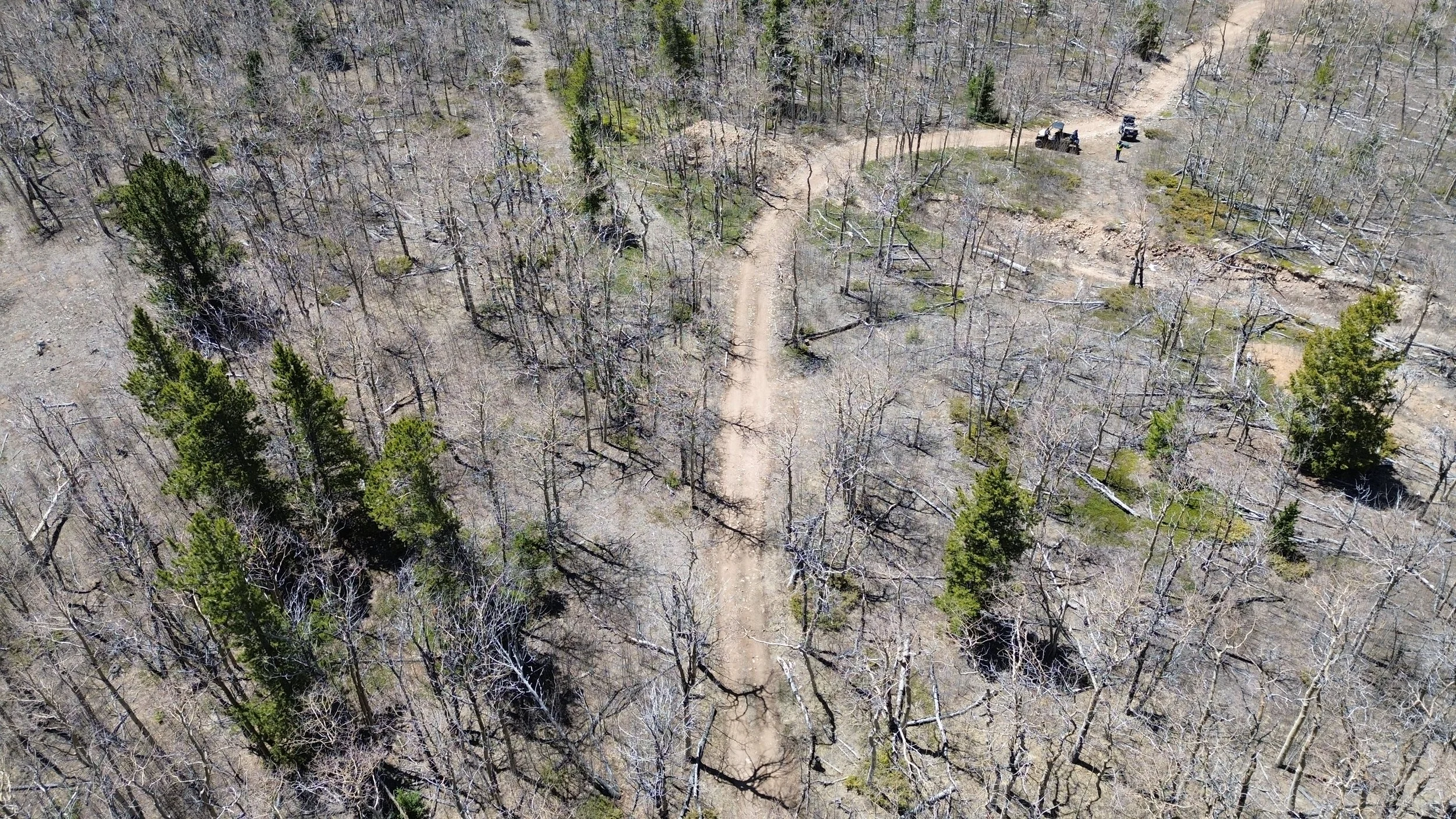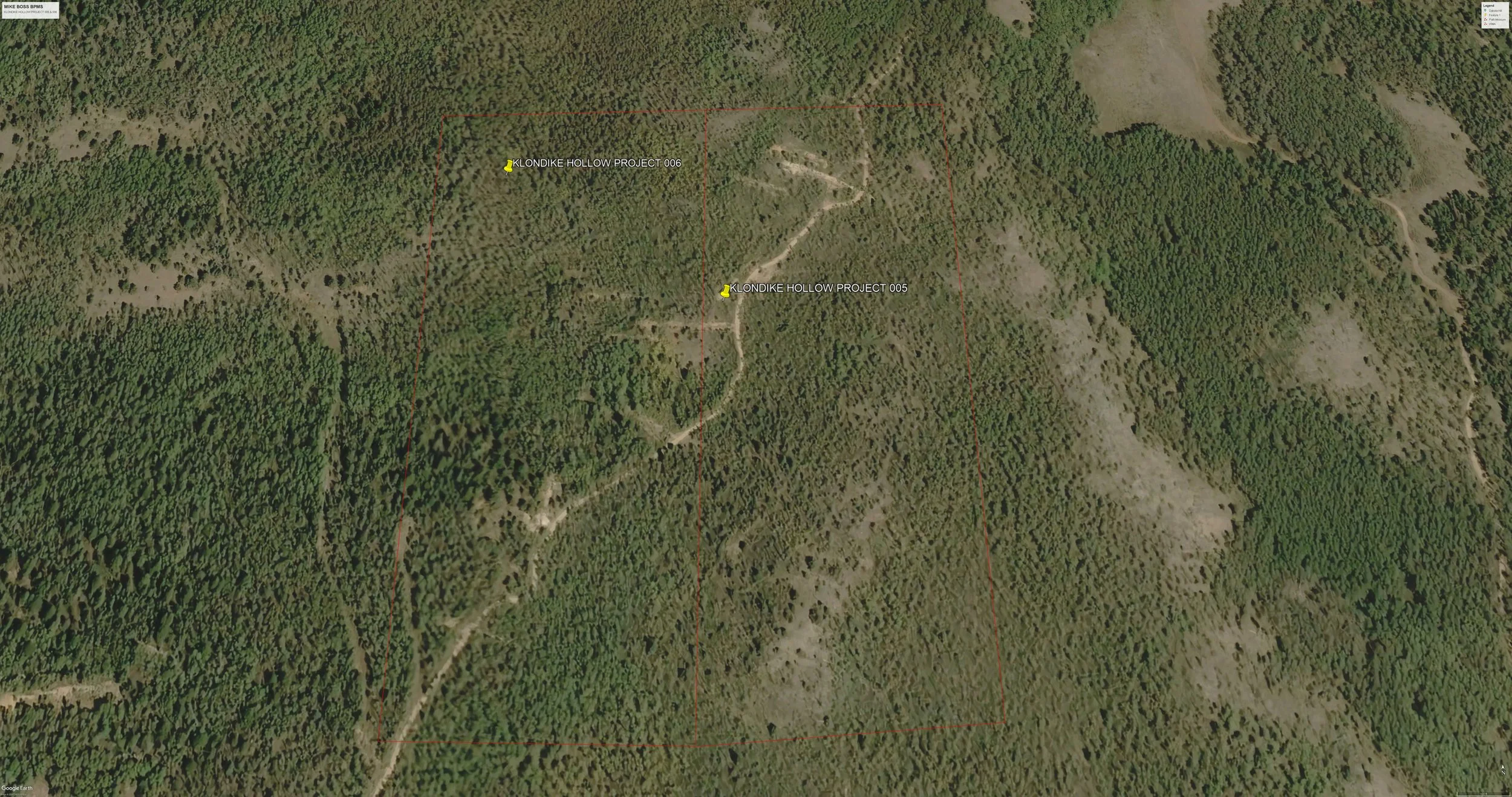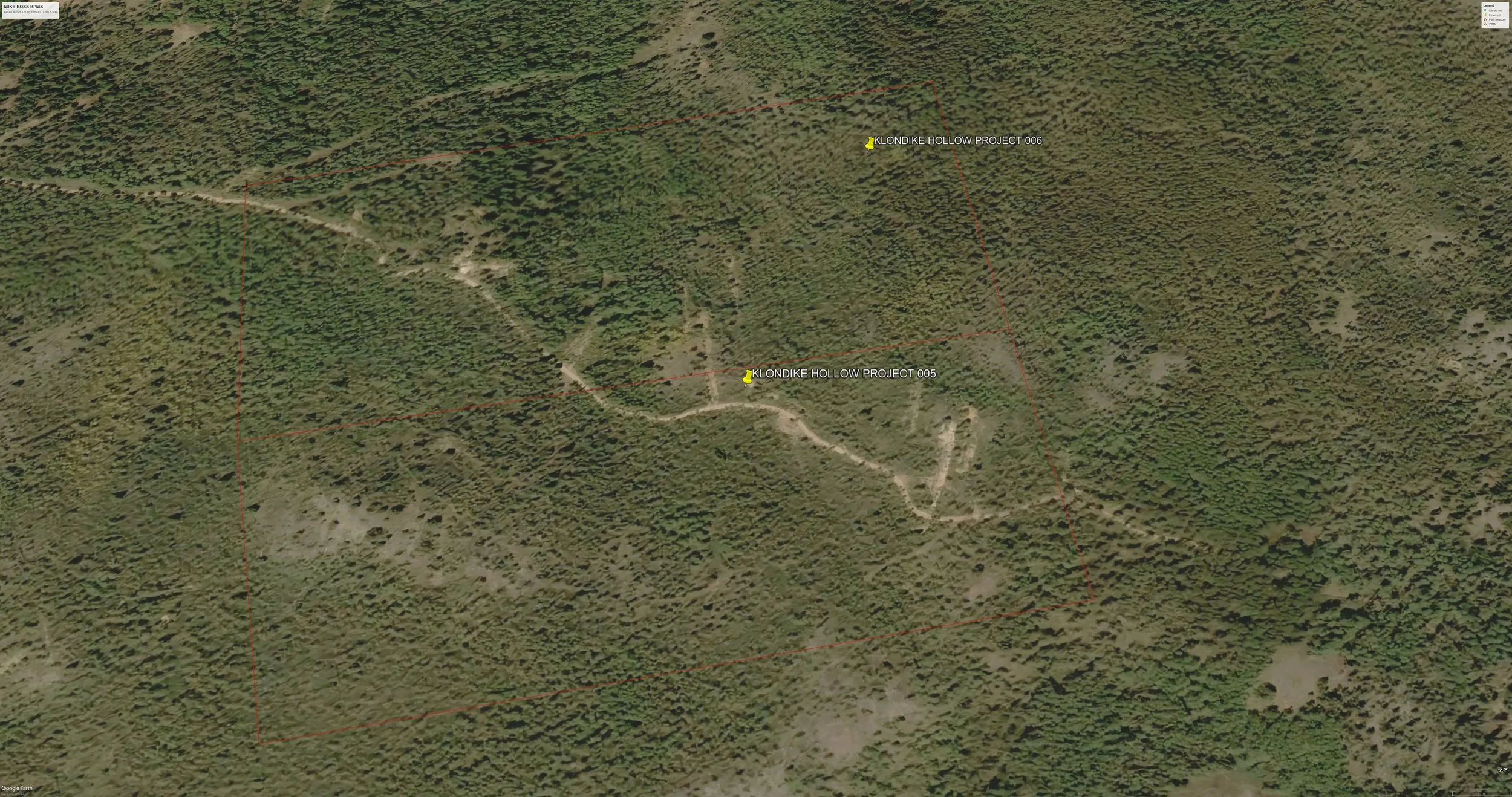
Klondike Hollow 005 & 006
Prime Gold‑Silver Lode Claims | Bonanza (Kerber Creek) Mining District, Saguache County, Colorado
Two contiguous, fully‐defined lode claims (BLM Serial # CO10583862 & CO10529452) cover the heart of a high‑grade epithermal vein swarm on the north spur of Ford Creek. Each claim is 1,500 × 600 ft with secure corners, road access via Little Kerber Rd., and an approved Plan of Operations on file with the Rio Grande National Forest—meaning you can mobilize tomorrow.
Price: $50,000
Terms: Paid in Full no Financing
Geologic Position & District Pedigree
The property sits within the Bonanza–Kerber Creek Mining District, a classic Oligocene volcanic center that produced >1.8 Moz Ag and 130 koz Au from carbonate‑quartz‑sulfide veins hosted in Rawley Andesite and ash‑flow tuffs of the Bonanza caldera. Pre‑Cambrian hornblende‑mica gneiss provides a competent basement, while normal faults furnish vertical fluid pathways. Vein textures, metal ratios (Au:Ag ≈ 1:5), and shallow argillic alteration suggest an upper‑level, boiling‑zone epithermal system—the same setting that delivered multi‑ounce shoots at the historic Rawley, Bonanza King, and Exchequer mines 4–9 mi south
Modern Exploration Highlights
A 2024 bulk‑sampling program reclaimed five historic piles and collected 31 systematic fire‑assay samples:
Resource Upside
Immediate ore: ~1,000 t stockpiled at site with an in‑situ metal structure located in multiple areas within the claims.
Exploration targets: Three untested vein splays project across both claims—drill permits could be fast‑tracked in this district.
District scale: Veins remain open at depth; historic producers averaged 300–600 ft vertical continuity.
The Bonanza district is undergoing a renaissance: neighboring private placements closed at nearly $2,800/acre in Q2‑2025. Secure these claims at a fraction of replacement cost before institutional capital locks the district. Limited deeded ground, proven metallurgy, and an active permit position Klondike Hollow as the only shovel‑ready lode play in the northern camp.
Streamlined Acquisition Pathway
Introductory Call – A short discovery conversation to confirm your technical goals, timing, and capital requirements.
Guided Site Visit – Escorted field inspection with real‑time drone footage, assay library review, and infrastructure walk‑through (NDA issued on arrival).
Agreement + Binding LOI – Immediately after the visit, execute the Purchase & Sale Agreement and submit a binding LOI with earnest deposit.
Ten‑Day Closing – Settle the remaining balance within 10 business days; we record the warranty deed and file the BLM transfer the same day—getting you operational without delay.
Expanded Geologic Narrative
Regional Volcanic Architecture
Klondike Hollow lies on the north flank of the 33 Ma Bonanza caldera, a trap‑door collapse structure nested in the northeastern San Juan volcanic field. The claims straddle the Kerber Creek ring‑fault corridor where a west‑dipping stack of Rawley‑age andesite–dacite flows, volcaniclastic breccias, and intracaldera rhyodacitic Bonanza Tuff form a 1.5 km‑thick wall rock succession. These lava–tuff couplets are the inner caldera ramp that subsided >3 km during explosive eruption of the Bonanza ignimbrite, exposing a remarkably intact volcanic architecture at present erosion levels. Country‑Rock & Host Lithologies
The ore field is developed in porphyritic andesites of the Rawley complex and their overlying crystal‑rich welded tuff. Both units show pervasive albite–epidote–chlorite propylitization and fracture‑controlled acid‑sulfate overprints adjacent to subvolcanic diorite–granodiorite plugs that drove resurgent uplift. Where alteration intensity wanes, primary microlitic plagioclase, hornblende phenocrysts, and welded pumice lapilli textures remain visible—favorable indicators that brittle continuity persists beneath the oxide cap.
Ore‑body Architecture
Mineralization is hosted in adularia–quartz ± carbonate veins occupying NE‑ and NW‑striking fissures that exploit caldera‐margin dilatancy created by episodic uplift of the Whale Hill resurgent dome. Individual veins average 0.3–1.2 m true thickness, extend >150 m down dip, and display classic low‑sulfidation banding: milky comb quartz, bladed calcite pseudomorphs, late rhodochrosite, and locally fluorite gangue south of the historic townsite Fluid inclusion studies from neighboring Rawley workings indicate boiling at 240–270 °C and 400–600 m paleodepth—prime conditions for bonanza‑grade precious‑metal deposition.
Telluride–Enriched Metal Suit
Beyond robust Au–Ag grades, the Bonanza district is distinguished by an elevated tellurium signature. Documented species include sylvanite (AuAgTe₄), petzite (Ag₃AuTe₂), krennerite (Au₃AgTe₈), native tellurium, and rare Fe‑tellurites such as poughite and mackayite—many recorded within 3 km of the claims at Empress Josephine, Klondike, and Rawley mines. Tellurium association not only enhances gross metal value but signals high‑temperature, high‑saturation pulses capable of producing shoot‑style grade spikes.
Hydrothermal Alteration & Vectoring
A concentric alteration halo surrounds the property:
Inner quartz–adularia—Au–Ag–Te core, coincident with mapped veins and assay hot spots.
Intermediate sericite–illite ± kaolinite zone that blankets the central claim blocks and suppresses resistivity—ideal for IP targeting.
Outer propylitic shell (epidote–chlorite–albite) grading outward into relatively fresh Rawley flows. This telescoped zoning, coupled with multiple intrusive heat pulses, is a textbook vector pointing drilling back toward the vein swarm beneath the current oxidation level.
Exploration Implications
Historic production focused on easily accessible vein splays above the water table, leaving the deeper, structurally continuous feeders untouched. The intersection of the Kerber Creek ring fault with cross‑cutting NE fractures provides a three‑dimensional plumbing network capable of sustaining multi‑ounce “shoots,” as evidenced by grades up to 0.93 oz/t Au and 7.42 oz/t Ag in surface composites. Systematic step‑out core drilling along these structural intersections could rapidly convert the current exploration story into a compliant resource.
Bottom Line for Investors
In the Bonanza district, telluride‑bearing, low‑sulfidation epithermal systems have historically rewarded miners with spectacular pocket grades, yet modern systematic exploration has barely scratched the subsurface potential. Klondike Hollow delivers all the hallmarks of the next discovery: preserved boiling‑zone geology, a robust Au–Ag–Te metal suite, and turnkey permits that let you test the system immediately.
Secure your position before the next drilling campaign proves what the geology already shows us.
